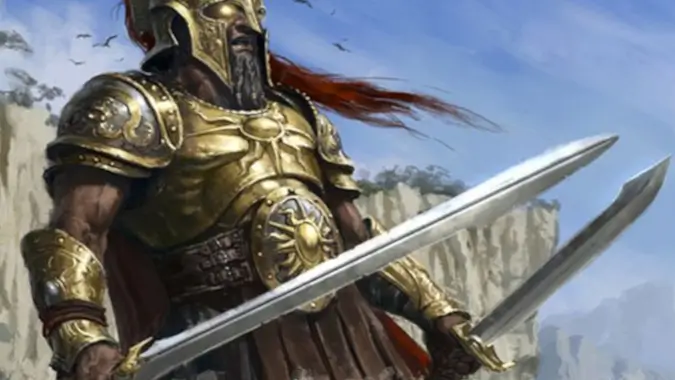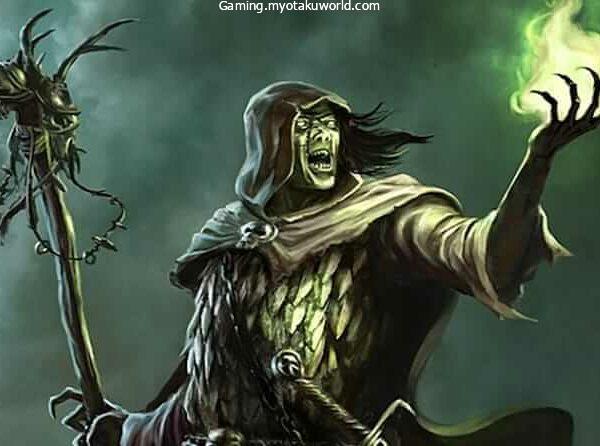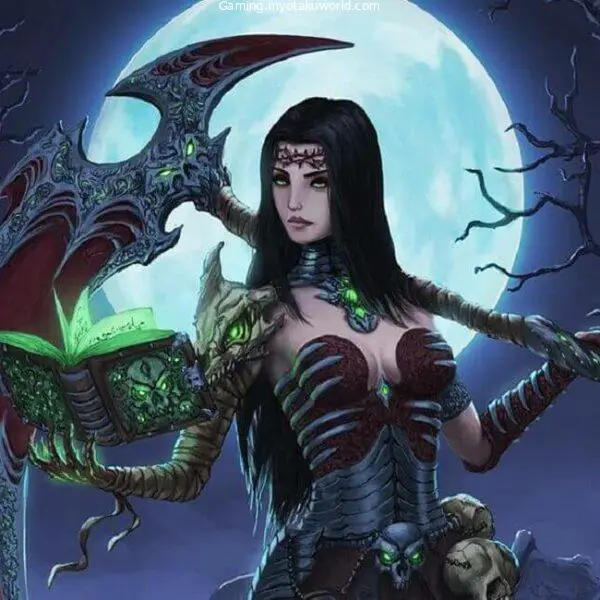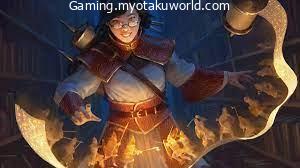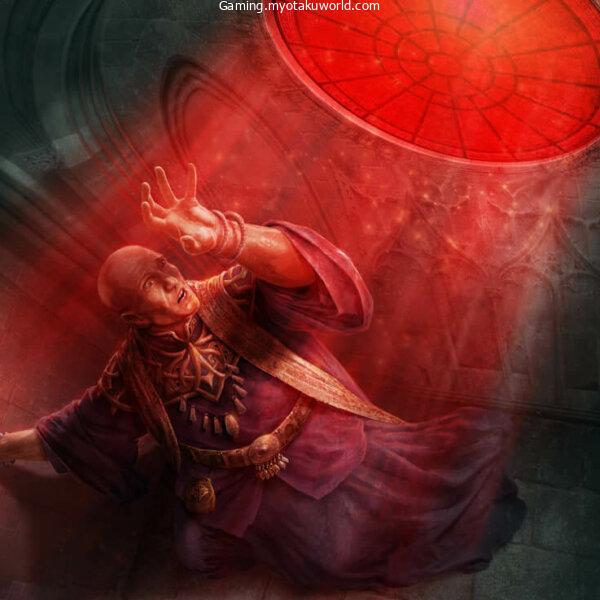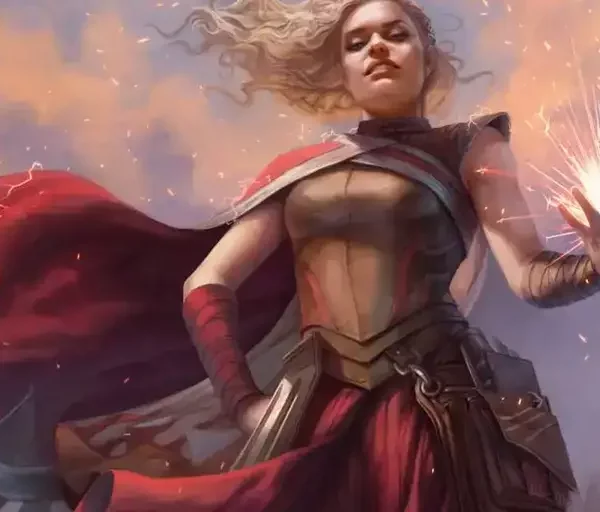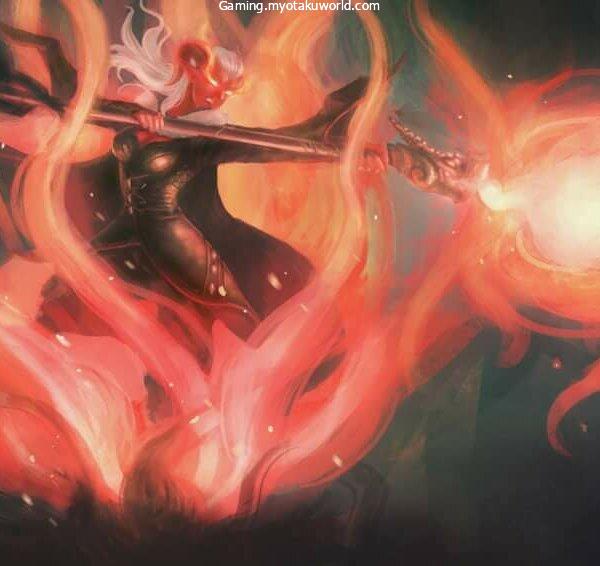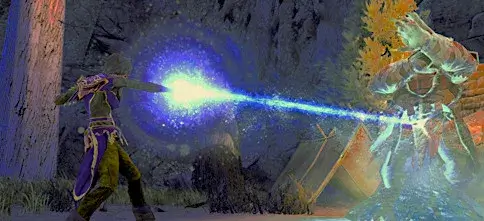Do you want to make a Dungeons & Dragons 5e character that can Dual Wielding weapons at once?
Some people don’t seem to know how to use two weapons at once.
So, let’s talk about how 5e works, what weapons you can use, and whether or not using two weapons at once is a good idea in 5e.
Let’s get started.
- The Downlow on Dual Wielding 5e
- What is Dual Wielding in Dungeons and Dragons 5e?
- What I’ve Learned About Dual Wielding?
- How to Dual Wield in D&D 5e
- Dual Wielding Feats 5e and More
- How Does Dual Wielding Work in 5e?
- Can You Dual Wield Without Two-Weapon Fighting?
- Two-Weapon Fighting & Extra Attack
- The Dual Wielder Feat
- What Weapons Can You Dual Wield in DnD?
- Is Dual Wielding Good in 5e?
- FAQs
The Downlow on Dual Wielding 5e
In D&D 5e, you might want to consider dual-wielding if you play a melee class that doesn’t use many spells. In the end, dual wielding can help you early on if you use light melee weapons and don’t use your bonus action very often.
But dual-wielding might not be the best choice if you use two-handed weapons, cast spells, or have a lot of good bonus actions. In the end, though, it’s up to you to decide.
I think that roleplaying should be the main focus of most character creation in Dungeons and Dragons. Minmaxers have their place, but my heroes are the ones who can really get into character and role even with flaws.
What is Dual Wielding in Dungeons and Dragons 5e?
- Weapon Requirement – Light
- Dual Wielding Title – Two-Weapon Fighting
- Classes That Can Dual Wield – Any
When you fight with a weapon in each hand, you are dual wielding. It’s really that easy to understand. Both in real life and in Dungeons and Dragons 5e, this is true.
When you use two weapons at once, your first attack will be stronger than your second.
The first attack is made with your on-hand, which is the hand you use when you only have one weapon. Depending on your ability modifier, your second attack is usually a bit weaker.
This is a realistic way to handle using two weapons at once. It makes me think of the scene where Inigo Montoya and Westley fight with swords.
In the scene, both fighters start the fight with their left hands, but then they show that they both use their right hands.
This suggests that they weren’t using their full strength and that switching hands would give them more power. In Dungeons and Dragons, if you switched hands, the same thing would happen.
What I’ve Learned About Dual Wielding?
When I used two weapons at once, I was a Rogue with shortswords. I use two weapons at once whenever I can in a game.
I did it in Elden Ring, and I do it in almost all RPGs. When Kirito was the first character in Sword Art Online to use two weapons at once, it broke my heart.
Why hasn’t anyone else thought of it yet? It’s what comes to mind first. Even though I was told it wasn’t best for a Rogue to use two weapons at once, I did it anyway, and I’m glad I did.
In fact, I’ve never regretted a build choice I’ve made in Dungeons & Dragons because I always make them from the heart and because I care a lot about my character.
How to Dual Wield in D&D 5e
Two-Weapon Fighting is the correct term for using two weapons at the same time in Dungeons and Dragons.
But, to keep things clear, I’ll use the term “dual wield” to mean the same thing throughout this guide.
In 5e, there is only one basic requirement for dual wielding: both weapons must be “light.” For dual wielding, there are no other requirements, but there are some specs that can be improved with feats.
Light Weapons
| Weapon | Weight | Base Cost | Damage | Properties |
| Club | 2lbs | 1 Silver | 1d4 bludgeoning | Light |
| Dagger | 1lb | 2 Gold | 1d4 piercing | Finesse, light, thrown |
| Handaxe | 2lbs | 5 Gold | 1d6 slashing | Light, thrown |
| Light Hammer | 2lbs | 2 Gold | 1d4 bludgeoning | Light, thrown |
| Sickle | 2lbs | 1 Gold | 1d4 slashing | Light |
| Scimitar | 3lbs | 25 Gold | 1d6 slashing | Finesse, light, martial |
| Shortsword | 2lbs | 10 Gold | 1d6 piercing | Finesse, light, martial |
| Crossbow, hand | 3lbs | 75 Gold | 1d6 piercing | Ammunition, light, loading, martial |
Simple weapons, on the other hand, can usually be used by anyone. But you need special training to use martial weapons. Some classes start the game with the ability to use melee weapons well. These weapons usually cost more and weigh more than simple weapons, even though they are still light.
Crossbow Problem: You can technically use a crossbow with both hands, but it’s not a good idea. To reload your hand crossbow, you need your extra hand. So it only works for one shot, maybe during a surprise attack. But it doesn’t matter much after that.
Attacking while Two-Weapon Fighting
When you use two weapons at once, you must make your attack action with one of your light weapons, even if you have a feat. Then, as a bonus, you can attack with the other weapon.
You don’t add your ability modifier to the second attack, though, unless your ability modifier is a negative number. Then you have to add the negative, which will make the attack do less damage.
Rules of Two-Weapon Fighting
- Drawing Weapons: You can pull out your main weapon when you attack or move. But you have to use a full action to draw the second weapon. Only the first turn matters, but that could be important.
- Spellcasters can learn to use two weapons at once, but it will take a long time to get good at it. As a spellcaster, you might need both hands to grab ingredients or cast spells.
- Bonus Action Override: Unless an ability says otherwise, you can only use one Bonus Action per turn. Don’t go for the second attack right away if you have something else that would be better for the fight.
- If the weapon is Light and has the Throwing trait, you can throw it when you attack. This doesn’t change because you’re using two weapons at once.
Dual Wielding Feats 5e and More
There is only one “two hands” ability. If you choose to use two weapons at once, there are other feats that can help you a lot, but this will depend on what class you play.
Dual Wielder
Dual Wielder is a useful feat for a lot of different classes. The Player’s Handbook says this about Dual Wielder: “You know how to fight with two weapons.” Then, you get the following perks:
- +1 to the AC while you hold a different melee weapon in each hand
- You can use Two-Weapon Fighting even when you’re using heavy one-handed melee weapons.
- You can pull out or put away two one-handed weapons when you would normally only be able to do one.
The AC bonus is simple, and it can mean the difference between life and death. But there are a lot of ways to get AC. Any one-handed weapon, even heavy ones, can be used with both hands, which is great for classes that use heavier weapons.
Lastly, the ability to draw and put away will help you if you are attacked from behind or ambushed. Because drawing or putting away your secondary weapon usually takes an action.
Even though all three of these are great, I only think the second bonus is worth it because it lets classes that like heavier weapons do something similar to dual-wielding.
How Does Dual Wielding Work in 5e?
First of all, let’s get some of the confusion out of the way. Even though it’s often called “dual-wielding,” the correct term is Two-Weapon Fighting.
This is important because we’ll talk about the Dual Wielder feat a little bit later.
But since it’s a common term, I’m still going to say “dual wielding.” Just remember that.
Now, in 5e, the rules for using two weapons at once are pretty clear.
“When you take the Attack action and attack with a light melee weapon that you’re holding in one hand, you can use a bonus action to attack with a different light melee weapon that you’re holding in the other hand. You don’t add your ability modifier to the damage of the bonus attack unless that modifier is negative. If either weapon has the thrown property, you can throw the weapon, instead of making a melee attack with it.”
From the Player’s Handbook or DnD Beyond: Combat Rules, page 195
What does this mean, then?
In 5e, a character can basically use two weapons at the same time as long as both of them have the Light property.
When you use the Attack action, you can use your off-hand weapon to make an extra attack as a bonus action. Your Attack Modifier is still added to the try.
But if you hit with the second attack, you don’t add your Damage Modifier to it. That is unless you have a word that says the opposite.
Can You Dual Wield Without Two-Weapon Fighting?
Here’s what makes some people confused.
First of all, yes, you can use two weapons at the same time without the Two-Weapon Fighting Fighting Style. But I’m going to have to explain this.
Fighting Style is a trait that some classes get. And Two-Weapon Fighting is one of the choices you can make. This isn’t confusing at all, since the PHB for 5e also has a section on combat called “Two-Weapon Fighting.”
In any case, this is an exception to the rule.
It only lets you add your Damage Modifier to the attack you make with your off-hand. So, it gives a small boost to your character who uses two weapons at once.
So, to answer the full question, you can fight with two weapons even if you don’t choose the Two-Weapon Fighting Fighting Style.
Got it?
Two-Weapon Fighting & Extra Attack
So, what happens if you have an Extra Attack and attack while using two weapons at once?
To be honest, not much.
When you use two weapons at once, you can swing with the one you don’t have in your main hand. However, this uses your bonus action.
Extra Attack means that when you take the Attack action, you can attack twice. But you still only get one bonus action each turn.
Basically, Extra Attack means that when you take the Attack action, you attack twice. Then, you can use your bonus action to attack with the weapon you don’t normally use.
Here’s how things went down:
- You say that in your turn, you’ll do the Attack action.
- You make your first attack. If you hit, you do damage.
- If you hit with your second attack, you do damage.
- You say you’re going to use your bonus action to attack with your weapon in your other hand.
- If you hit, deal damage.
Now, all of this is based on the idea that you are only 5th level and only get one more attack.
The most important thing to remember is that if you are dual wielding, you use your bonus action to make an attack with your other hand. And each turn, you only get one bonus action.
So, with the Extra Attack feature, you don’t get another off-hand attack because you don’t get another bonus action.
The Dual Wielder Feat

Now, just to make things even more confusing, let me tell you about Dual Wielder.
From the PHB, page 72:
“You are good at fighting with two weapons. You get a +1 bonus to your AC when you have a different melee weapon in each hand. You can use two-weapon fighting even if the melee weapons you are using with one hand aren’t light.
You can draw or put away two one-handed weapons when normally you could only do one.”
Let’s break this down.
First of all, this feat gives you a bonus to your Armor Class if you’re using two one-handed weapons. This is nice since most martial arts characters are in the middle of a fight. And since you can’t hold a shield with one hand because it’s already being used, every bit of protection helps.
Next, Dual Wielder takes away the rule that you can only use weapons that have the Light property. But your weapons still need to be able to be used with one hand or have the property “Versatile.”
Some of the weapons they used were the longsword, battle axe, spear, and many others. So, no great axes or glaives with two handles…
Even though that would be cool.
Last, the feat lets you draw or put away two weapons at once instead of just one. As written, each turn you get one free action. If you missed this in the PHB, don’t worry. It’s just not very well explained.
But on page 190 of the PHB and in the combat section of DnD Beyond, it says that your Free Action can only be used to draw or put away one weapon at a time.
So, Dual Wielder gets rid of this rule by letting you draw and store two weapons.
…
Or, this probably won’t matter because your table won’t follow this rule because it stinks and isn’t fun.
What Weapons Can You Dual Wield in DnD?
You can use two of any Light-type weapons at the same time. The trick is that both weapons must have this property.
People often think (or choose to ignore the rules as they are written, which is fair) that your off-hand weapon is the only one that needs the Light
So, here’s a list of the PHB weapons you can use at the same time:
Simple Weapons
- Club
- Dagger
- Handaxe
- Light Hammer
- Sickle
Martial Weapons
- Scimitar
- Shortsword
- Crossbow, hand*
So, if you want a character who can use two weapons at once, you need to use two of these weapons.
*But, and this is the exception, Even though you can use two hand crossbows at the same time, you can only attack with each one once during an action or bonus action. This is because of the Loading property of the weapon.
…
If you don’t take the Crossbow Expert feat, that is. But that’s not the same thing at all.
Is Dual Wielding Good in 5e?

Well, it depends on who you ask.
Dual wielding isn’t the best way to play D&D 5e. That doesn’t mean, though, that it’s bad.
For one thing, the rules don’t work in your favor.
Since using two weapons at once uses up your bonus action to make that second attack, your character can’t do as much if that’s all you want to do.
So, if you want to fight with two weapons, you shouldn’t be a Cleric or Druid. They use their bonus action in a lot of spells. So, they should almost always cast one of those spells instead of attacking with their other hand.
Even spellcasters who don’t have the War Caster feat aren’t good at using two weapons at the same time.
But if you want a character who can use two weapons at once, the Barbarian, Paladin, and Rogue are all pretty good choices.
Each of them has a bonus action that gives them a small number of choices. So, you can do that bonus action swing as many times as you want.
And having that second attack with your off-hand means you have a better chance of rolling a critical hit, which could make you do more damage.
From a mathematical point of view, Two-Weapon Fighting does less damage than Great Weapon Fighting. This StackExchange post shows how the two compare to each other.
In the early levels, Two-Weapon Fighting is better than Great Weapon Fighting (by about 1 damager per round). But at level 20, the tables turn, and GWF becomes the better choice by about 10 damage per round, based on math.
Really, there isn’t that much difference (especially at those levels). And I don’t think you’d notice, since the amount of damage done in combat in D&D 5e can swing a lot in either direction.
Thematically, using two weapons at once is pretty cool.
I know this is a matter of taste. But pictures of people with two swords or axes are so common in the media that it’s hard to ignore them.
The image is too badass to ignore, whether it’s the pirate with two cutlasses or the Viking with two axes.
Can Any Class Dual Wield?
Yes. Any class in D&D 5e can use two weapons at once.
The important question is whether or not they are good at it.
Some classes, like the Barbarian, Paladin, and Rogue, are better at using two weapons at once. Others, like the Cleric, Druid, and, ironically, the Fighter, are not as good.
Does Dual Wielding Count as Two Attacks?
It depends.
Using your off-hand to attack is not technically an Attack Action. But spells and abilities that depend on attacks or hits can happen when you make your second attack.
This is why Paladins are good at using two weapons at once. They can use their Divine Smite ability on both attacks, the regular one from the Attack Action and the one with their off-hand that is a bonus action.
So, no, using your bonus action to attack isn’t an Attack Action. And yes, you still are making an attack.
It all comes down to words.
Can you Dual Wield Rapiers in DnD 5e?
People always seem to pick this weapon when they want to use two at once.
Rapiers can’t be used with two hands by default in D&D 5e. To do that, you need to take the Dual Wielder feat.
Can You Dual Wield Heavy Weapons in 5e?
In a sense, yes. In D&D 5e, you can use two Heavy weapons at the same time.
Heavy weapons can be used to fight with two weapons at once, but there is a trick to it. The Dual Wielder feat is also needed.
In 5e, a lot of weapons that are Heavy also have the property of being able to be used with two hands. So, even if you have the Dual Wielder feat, you can’t use them both at the same time.
That’s about all there is to know about dual wielding in D&D 5e.
To summarise:
- Two-weapon fighting can be done by anyone.
- Unless you have the Dual Wielder feat, you can only use weapons with the Light property. When you attack with your off-hand, you use your bonus action.
- If you don’t have the Two-Weapon Fighting Fighting Style, you don’t add your damage to the off-hand attack.
- You only ever get one bonus action on your turn, so Extra Attack doesn’t affect dual wielding.
And remember to play the character you want to play, even if it’s not the best choice from a math point of view. People shouldn’t be able to force you to play a different build just because they don’t like dual wielding.
The most important thing to remember is that using two weapons at once uses your bonus action. So, keep in mind what you can do as an extra action.
FAQs
Is Dual Wielding Good in 5e?
In DnD 5e, using two weapons at once isn’t a big part of any play style. But it can help classes that don’t usually have enough Bonus Actions. Keep a second weapon and double attack when you can’t decide what to do.
Can Any Weapon Be Dual Wielded in 5e?
You can use any light weapon to dual-wield, even if you don’t have the Dual Wielder feat. Then you can use two hands with any one-handed weapon. No matter what, it’s still a good idea to use a weapon you know how to use.
Can I Attack With Both Weapons At Once 5e?
No. To attack with the second weapon, you must use a Bonus Action. As far as I know, you can’t use both weapons at the same time to attack. Only one after the other.
Can I Dual Wield Rapiers in 5e?
If you have the Dual Wielder feat, you can do that. If not, you can’t because rapiers don’t have the light property, only the finesse property. My favourite weapons are those that don’t hurt too much, so I got the Dual Wielder feat so I can use rapiers.
